We all love being out on our bikes. But there’s always the risk – even if slight – of a crash, either from losing control or as a result of an incident with another road or trail user.
In the aftermath of a cycling incident, shock, panic and possibly pain can make it hard to think clearly.
But knowing what to do will help you make the right decisions, whether you’re directly involved in or witness a cycling crash.
We’ve asked a first aid charity, British Cycling and Giant Cycles for their advice on what to do.
What to do if you crash when cycling
Make sure you are safe
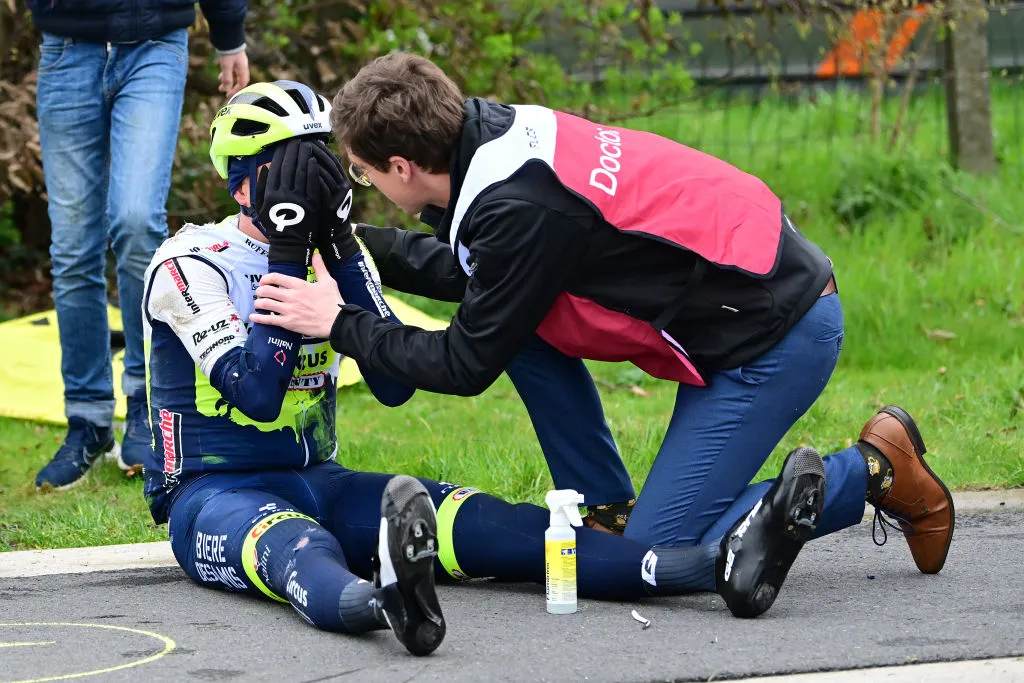
Immediately after a collision, assess the injuries of yourself and others (if involved).
James McNulty-Ackroyd, head of clinical projects at St John Ambulance, a charitable first aid organisation that assists the UK’s National Health Service at public events, including organised bike rides, says: “If you're uninjured, or have minor injuries, move to the side of the road and to safety as soon as possible.”
At the same time, if you suspect you have broken a bone, you should keep the affected area still.
McNulty-Ackroyd adds: “You can achieve this using blankets or a jacket to support affected arms or legs.
“A triangular bandage is best for supporting arm fractures, but you can achieve the same effect by tying the arms of a jacket together and putting it over your shoulders to rest your arm in the loop.”
In an incident involving a car or cars, where you or someone else cannot be moved safely, the paramedic says engines should be turned off and hand brakes and hazard lights switched on.
Where possible, high-visibility aids, such as jackets and warning triangles, should be used.
Report the incident if required
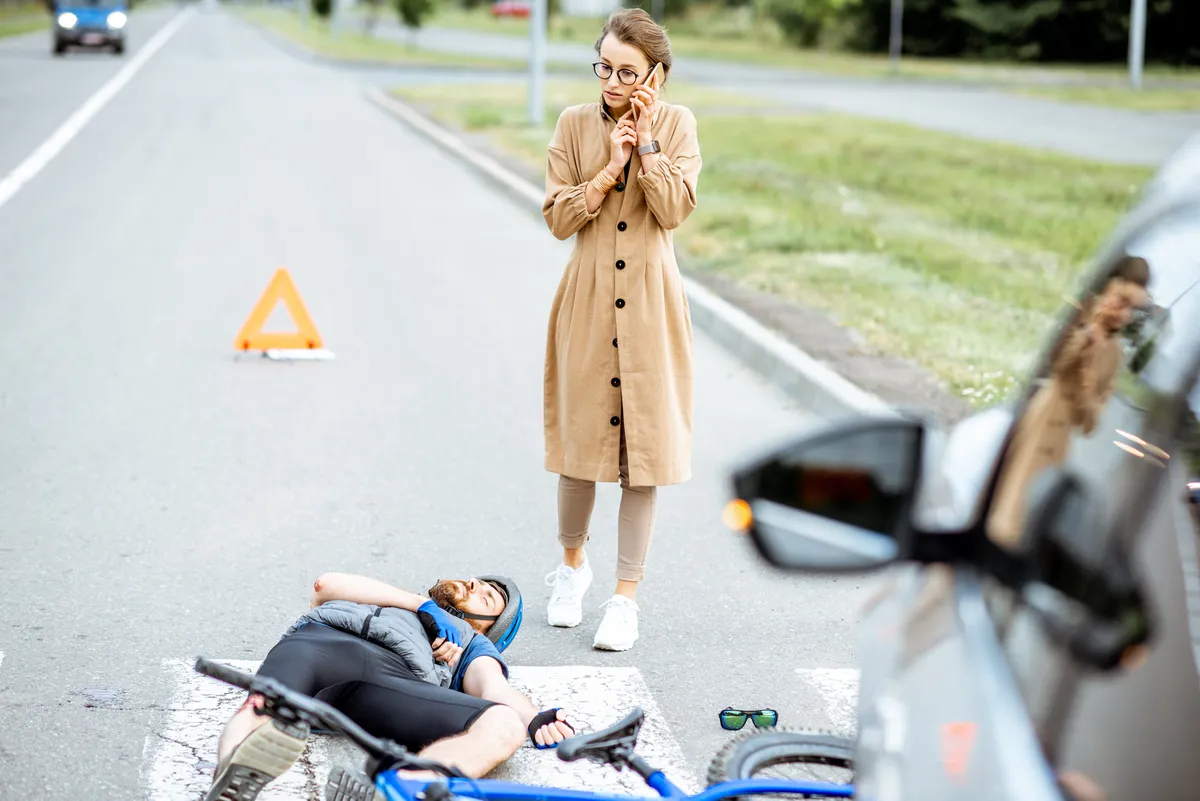
If someone is injured (including you) in a road traffic collision in the UK, you have an obligation to report the incident to the police "as soon as reasonably practicable" but within 24 hours.
In some European Union member countries and American states, it is a legal requirement to report a road traffic collision to the police, even if only property (such as cars) was damaged.
McNulty-Ackroyd says: “If your injury is serious (for example, you are unable to move or there is a severe bleed), you should dial 999 and ask for an ambulance.
“The police are normally dispatched as a matter of routine to these types of incidents and the ambulance service can inform them directly of any updates from the scene.
“If your injury is not serious, you can report this to the police online or through calling 101 (the non-urgent police line).”
If you are unsure about the severity of your injury or need more advice, he adds: “You can call 111 (the NHS non-urgent line) or you can attend an Urgent Care Centre or Emergency Department yourself.
“An ambulance will likely take longer to attend a non-life threatening incident, so it may be sensible to arrange another method of getting to hospital where possible.”
The best option after crashing on your bike is to stop riding even if you and the bike seem okay.
However, you may be far from any means of getting home without riding.
Provided you feel physically fine, Rob Granville, of Carbon Bike Repair, says your bike may be safe to ride as long as you thoroughly inspect the frame for damage.
You should also conduct a basic safety check of your bike, otherwise known as an M check.
Get the other party and witnesses’ details
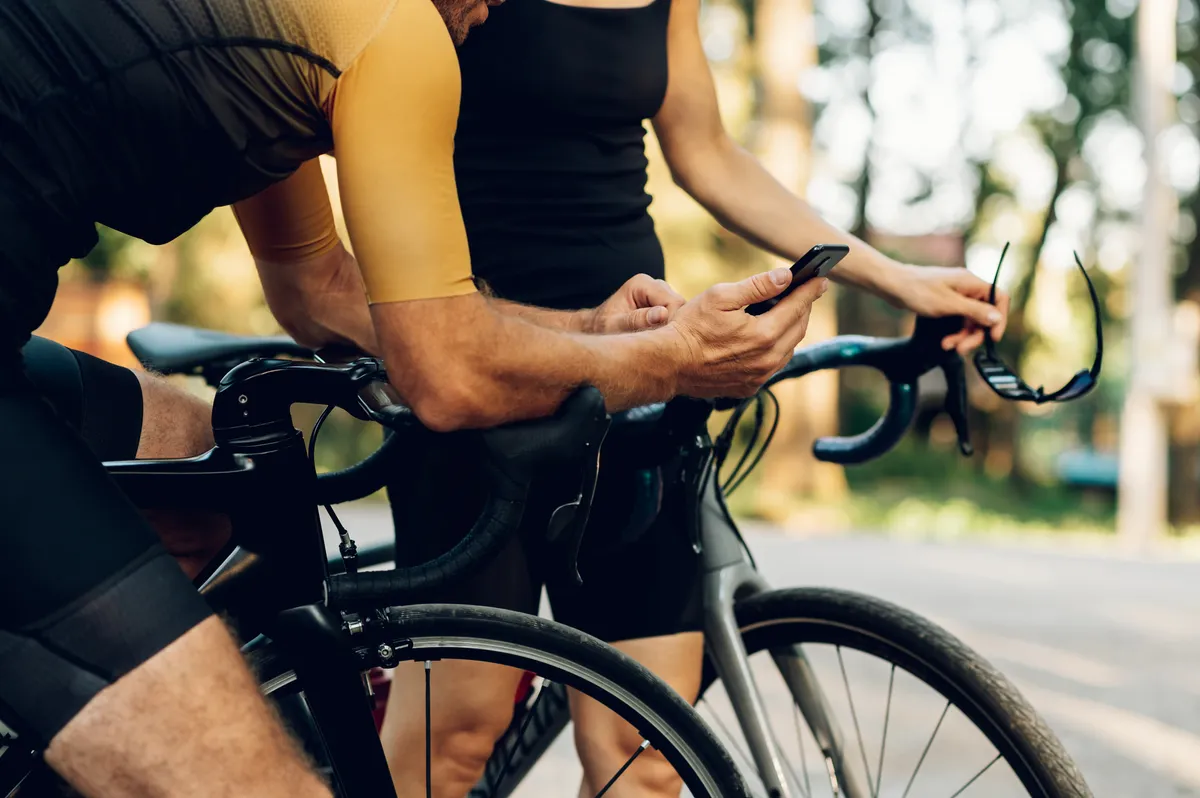
If you have been involved in an incident with a pedestrian, motorist or another cyclist, or collided with another person’s property, you should collect their contact details.
The same applies for people who witnessed the incident, regardless of who was involved.
This is because the police and insurers may want to speak to them to establish what happened and, if culpability is disputed, who was to blame.
Liz Murray, British Cycling’s operations and insurance executive, says you should try to make a record of the time and place of the incident, and details of any other vehicles, property or people (third parties) involved.
In addition, try to note down:
- Contact details for the third party (or parties)
- Make, model and registration number of any vehicles involved
- Insurance details of the driver(s) and vehicle(s) involved
- Contact details for all witnesses
- If safe to do so, details of the incident location – including photos of the location and any highway defects
Try to stay calm and don’t get involved in an argument, begin to apportion blame or admit fault.
Murray adds: “If another party fails to provide their contact or insurance information to you, or you have any concerns that the information given to you is incorrect or incomplete, this should be reported to the police immediately.”
Take photos
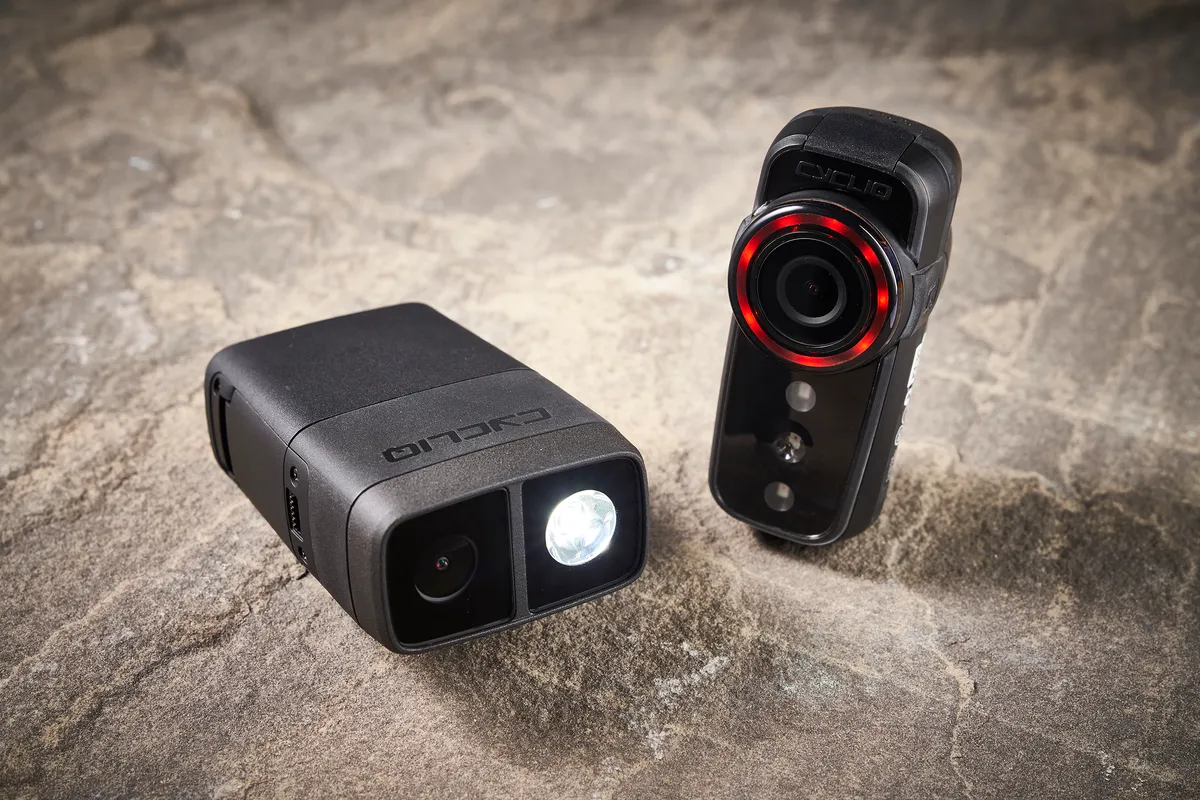
You should take photos to record the scene of the incident. If it was caused by a road defect, photograph this with an item such as a water bottle in shot to indicate its size.
If the scene is covered by CCTV, you or someone acting on your behalf should ask the property or business owner for a copy of the footage.
If you have it, helmet camera footage is useful too, particularly if you might need to make a claim against another party or defend yourself against any allegations of fault.
Make sure the footage is saved and not subsequently overwritten.
The more testimony and documentary evidence, such as images and video, you collect, the easier it will be to deal with any resultant insurance or legal claim.
Keep damaged items
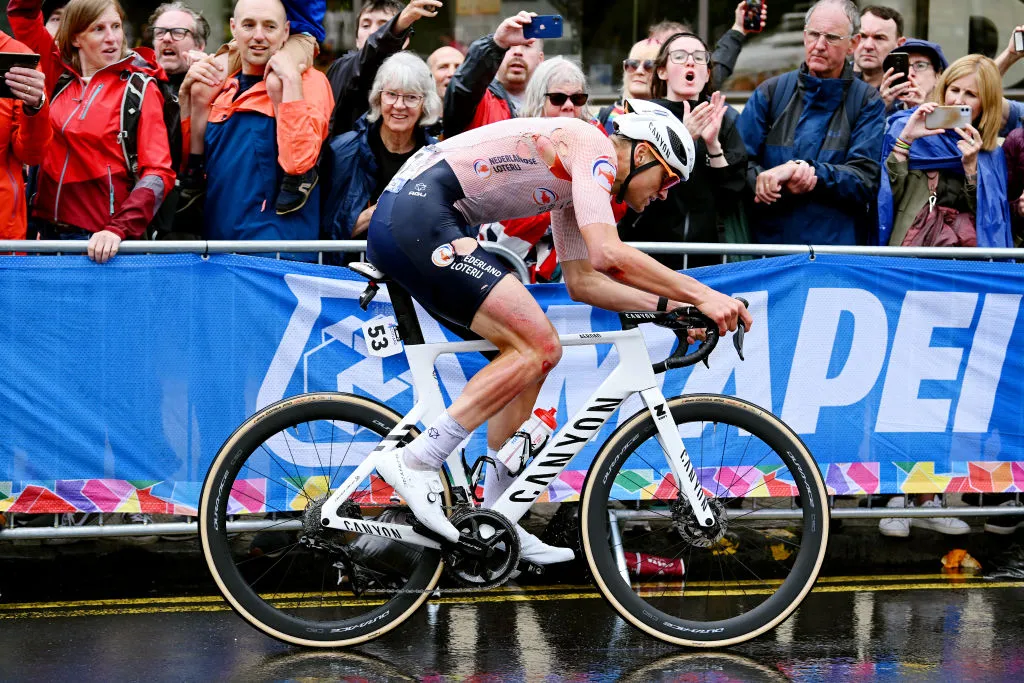
Keep anything that was damaged in the incident because it might be needed as evidence in an insurance claim.
That includes not just your bike, but riding kit, such as a helmet and clothing, and any accessories. Make sure you’ve picked everything up from the scene.
Don’t try to repair or replace your bike until you have permission from either your insurer or the insurer of the other party (if the incident was their fault).
Call your insurer
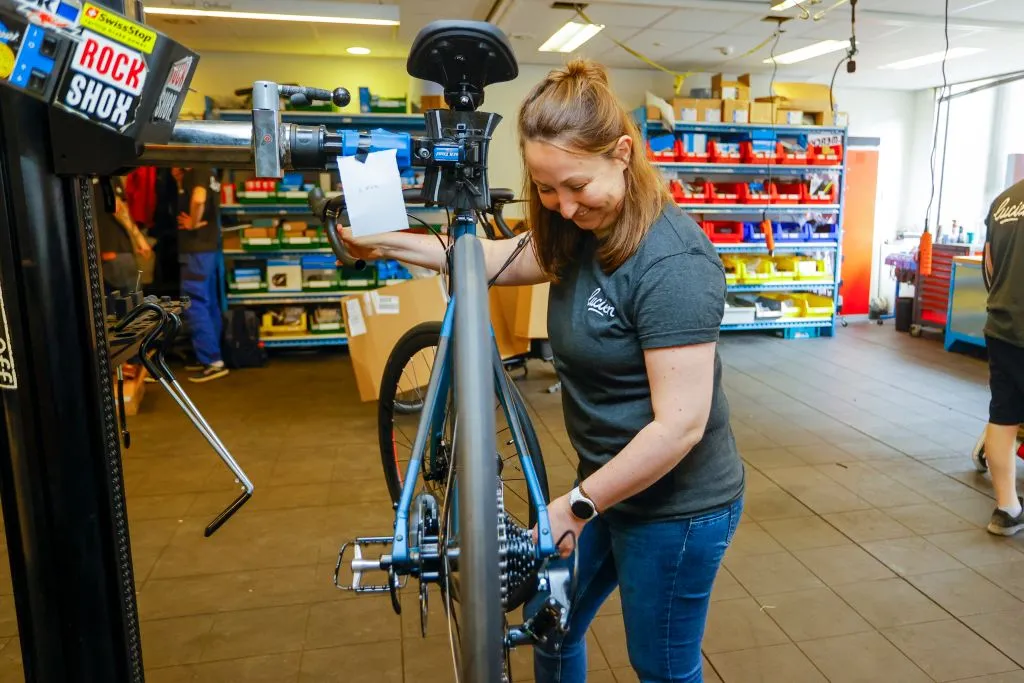
If you have bicycle insurance, contact your insurer as soon as practicable to let them know you’ve had a crash. They’ll want to know when, where and what happened.
They’ll also want to know what damage has been caused to you and your bike, clothing and accessories.
It’s worth getting an estimated cost of repair from your shop in advance if you can, and finding out what needs to be done, how long it will take and how soon you’re likely to have your bike ready to ride again.
Your insurer will also want to know details of any other parties involved in the incident, their contact information and their insurer, along with any witnesses’ details.

How having insurance can help
Bicycle insurance can help you recoup the cost of a new bike and accessories in the event of them being stolen or damaged.
You should also have cover for any claims made against you by the other party in an incident, so make sure you choose public liability cover as part of your cycle insurance.
Post-crash care
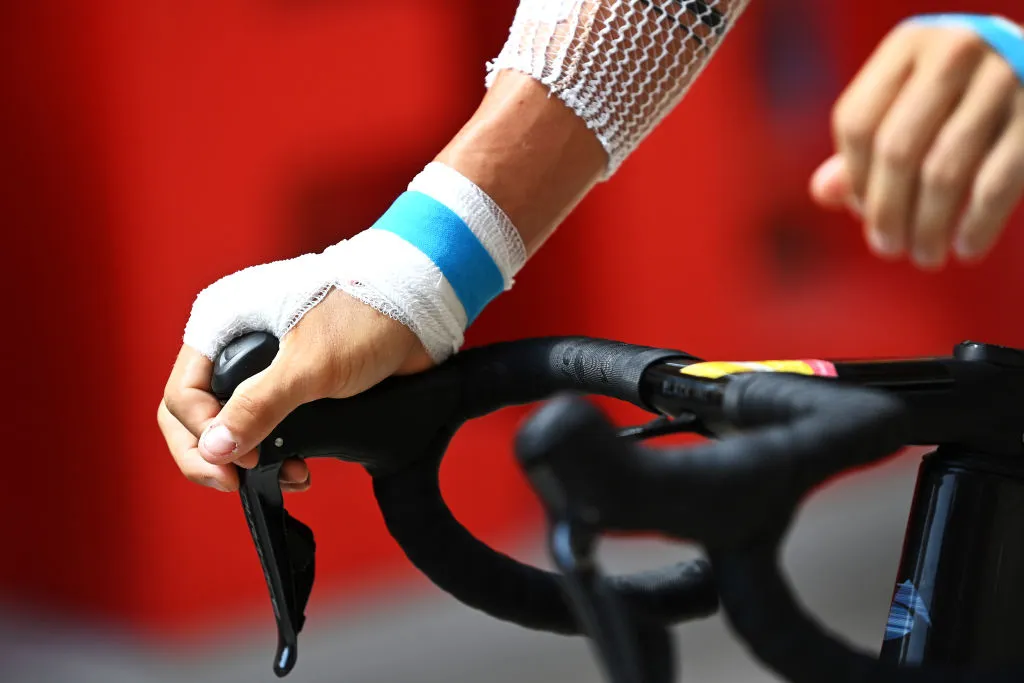
If you’ve been hurt in a cycling crash, keep an eye on your symptoms in the following days, especially after sustaining a head injury or concussion.
McNulty-Ackroyd says: “You should be alert to worsening drowsiness, persistent headaches, vomiting, confusion/loss of coordination or any loss of consciousness after the impact.”
You should immediately go to an emergency department or call an ambulance, if you are too unwell to make your own way or if any of these symptoms arise, according to the paramedic.
If someone in your care or household displays or reports such symptoms, take them to hospital straight away.
Follow medical advice on how to prevent road rash if you lost skin in the incident.
What should I do with my bike and helmet after crashing?
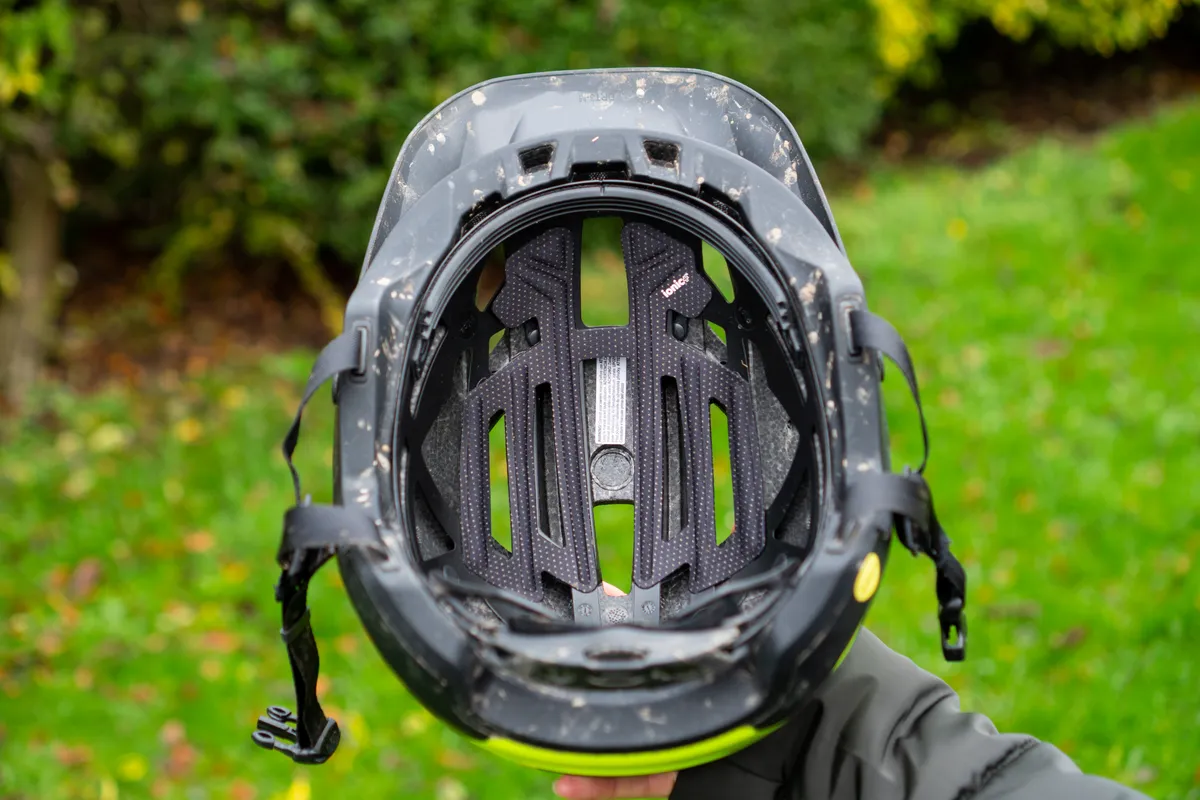
Even if there aren’t visible signs of damage, it’s a good idea to take your bike into a bike shop for a post-crash ‘health check’.
A professional mechanic will thoroughly examine the frame for cracks and dents.
Regardless of frame material, bike manufacturers, such as Giant, say you should contact them following a cycling incident.
Max Ratcliffe, a Giant technical support agent, says: “If in doubt, please refer to an authorised retailer, so we can fully establish the facts and give the best advice.”
Inspect your helmet for signs of damage, even if you don’t think you’ve hit your head – in the blur of a cycling incident, you won’t always realise.
Most brands advise replacing your road bike helmet or mountain bike helmet after contact with a hard object or surface. Some have a crash replacement policy.
